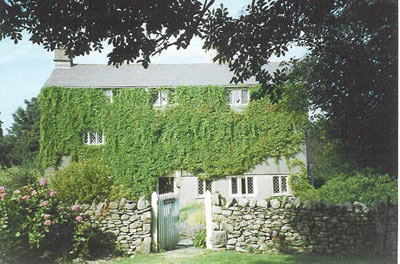“Let all nations hear the word…be obedient to the Lord God and go through the world and be valiant for the Truth upon earth…then you will come to walk cheerfully over the world, answering that of God in every one”
George Fox (1624–1691) was born in Drayton-in-the-Clay (Fenny Drayton), Leicestershire, England, the son of a weaver. He seems to have been of a serious, religious disposition from childhood, and his relatives thought he might become a priest. Instead, he was apprenticed to a shoemaker and grazier. This may have helped foster Fox’s desire to pursue simplicity in life.
As a young man, Fox became increasingly disillusioned with the religious life of his time. By is late teens, he had begun to look down on the behaviour of other young people who were members of the established church, in particular their excessive drinking of alcohol.
A spiritually independent and visionary youth, Fox left Fenny Drayton in 1643, at the age of 19, in a state of mental torment and confusion. The English Civil War had begun, and troops were stationed in many towns through which he passed. Fox returned to Fenny Drayton after a year, but then continued to travel around the country as his religious beliefs took shape.
This is one panel of the Quaker Tapestry.
Fox actively sought out advice from clergy, but they seemed unable to provide satisfactory answers about the matters troubling him. On his travels, Fox would have also encountered many other “seekers” who, like him, felt the churches had become bogged down with traditions, rituals and power politics, and seemed to be giving contradictory messages.
Fox wrote in his journal that, at age 23, at a time when he felt himself in the depths of despair, he heard a voice say “There is one, even Christ Jesus, that can speak to thy condition”. He added “When I heard it my heart did leap for joy”. Thus, Fox’s message was born: everyone can make direct connection with God, without the intervention of a priest, minister or pastor.
Fox then began to preach publicly, and to attract a small following. A group of people who often travelled together, calling themselves “Children of the Light” or “Friends of the Truth”, and later simply “Friends”, began to form at this time.
Fox, a tall strong figure, preached fearlessly to anyone, wherever he saw an opportunity – even in church after the minister had finished, which was allowed in Cromwell’s Commonwealth. He was not preaching a new religion, but a new perspective, that “God…does not dwell in temples or institutions made with hands, but freely in the hearts of men”. He spoke of “the inner light of Christ” or “that of God” in everyone. Fox envisaged a renewal of the simple Christian message and way of life. This wasn’t popular with priests of any religion. His deep spiritual convictions also contained a powerful social message.
By 1651, Fox had gathered other talented preachers around him. Worship of Friends in the form of silent waiting seems to have been well established by this time, though it is not recorded how this came to be.
The Beginnings of the Religious Society of Friends
Most Quakers would say that the Society of Friends came into being in 1652. In June that year, Fox felt led to ascend Pendle Hill, in Lancashire, where he had a vision of “a great people to be gathered”. From there he travelled to Sedbergh, where he preached to over a thousand people on Firbank Fell, convincing many to accept that Christ might speak to them directly. The plaque shown below commemorating this event is now fixed to the rock from which Fox is believed to have preached, nicknamed “Fox’s pulpit”.

Also in 1652, Fox visited Swarthmoor Hall in the Lake District, home of Judge Fell who, unlike most judges, accepted the validity of Fox’s teachings. His family, but not the judge himself, joined the movement, making Swarthmoor a centre for what was first called “Friends of The Truth” and then the “Society of Friends”. At this same time, ad hoc meetings of Friends began to be formalized, and a “Monthly Meeting” was set up in County Durham.

After Judge Fell’s death, in 1669, Fox married the judge’s widow, Margaret, now often called “the mother of Quakerism”. After 1669 Fox’s energies went mainly into consolidating the organisation and supporting the work of others. When he died in 1691, the Society of Friends numbered tens of thousands, and totalled about 1% of England’s population.
An interview with several English historians about the origins and early history of the Quakers can be heard at the link
https://www.bbc.co.uk/programmes/b01f67y4

You must be logged in to post a comment.